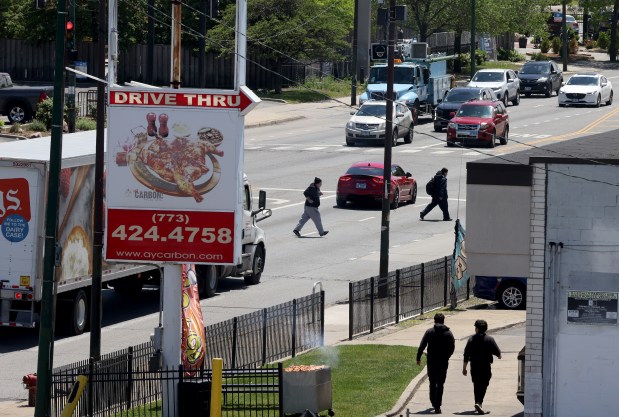The officers were just north of 71st Street when they saw a man lying in the middle of Western Avenue, close to the eastern boundary of the Chicago Police Department’s 8th District.
It was about 10:30 p.m. on May 13, and several witnesses told police that a silver vehicle was speeding north on the busy thoroughfare when the driver struck the man crossing the street.
An ambulance took the injured 76-year-old to Advocate Christ Medical Center in Oak Lawn, but he was soon pronounced dead. Police records indicate he was just half a mile from his home. The offending driver, witnesses said, kept going north on Western after the collision.
The man was among the hundreds killed in recent years in car crashes in Chicago. Citywide, fatal crashes now are occurring at a higher rate than before the onset of the COVID-19 pandemic in 2020, when stay-at-home orders forced scores of drivers to keep off the roads.
Since the start of 2019, more than 1,040 people have died of injuries suffered in Chicago motor vehicle crashes, according to data from the Cook County medical examiner’s office. Of those, more than 300 were pedestrians. About 200 of those died in crashes that occurred on Chicago expressways, records show.
Of the dead, more than 30 were children aged 14 or younger.
In 2019, the year before the pandemic, Chicago recorded 115 traffic fatalities, according to medical examiner’s office data. Five years later, in 2024, the city saw 175 traffic-related deaths — a 52% increase. Through the first four months of 2025, another 32 people were killed in Chicago crashes, data show.
Some researchers have found that aggressive and reckless driving was exacerbated by COVID-19, though they said traffic fatalities should eventually return to pre-pandemic levels.
“While traffic trends showed meaningful yet temporary increases in road collisions in the aftermath of similar natural disasters, it is hypothesized that the changes in driving habits brought about by COVID-19 too will subside following the return to more typical work conditions,” researchers concluded in a 2023 article published in the journal Transportation Research Record.
But in neighborhoods where crashes are most common, elected officials bemoaned a Police Department stretched too thin and a culture that’s lost respect for law enforcement. Activists on the Southwest Side, meanwhile, pointed to societal trends — larger and larger vehicles, as well as in-car tech features that can distract drivers — along with the physical characteristics of several arterial streets.
Killed in traffic
Minutes after the fatal crash on South Western Avenue earlier this month, officers saw a silver Nissan with extensive front-end damage drive south past the scene. The driver was curbed a few blocks away.
Officers saw two open bottles of vodka within arm’s reach of the driver’s seat. More unsettling, though, was what could be seen stuck to the windshield.
“Arresting officers further observed the vehicle’s front windshield to contain a chunk of hair consistent with the color of the victim’s,” an officer later wrote in the driver’s arrest report.
Officers allegedly could smell liquor on the driver, but she refused to undergo field sobriety tests. The 29-year-old woman, through slurred speech, asked to lean against a squad car to avoid falling over, an officer later wrote.
The driver, whose listed address is less than a mile from the crash site, remains in Cook County Jail pending trial. Prosecutors dropped the DUI charge against her three days after her initial court appearance, records show, though she still faces a charge of failure to report an accident involving injury or death, a felony.
CPD does run anti-DUI efforts in the area. A saturation patrol was conducted in the Chicago Lawn District between March 14 and 15, according to the department. That mission did not result in a single DUI arrest, but more than 50 citations were issued, most commonly for “unsafe vehicle violations.”
A look at one district
Data shows that nowhere in the city are crashes more common than in the Chicago Lawn District. In fact, it’s the only one of CPD’s 22 patrol districts to record more than 10,000 car crashes every year since 2021.
The district saw just three fatal crashes in all of 2019. Since the start of 2020, though, it has averaged more than one traffic death per month, more than any other police district, records show.
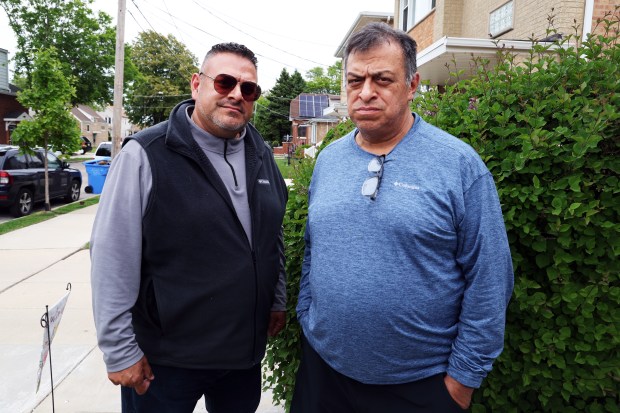
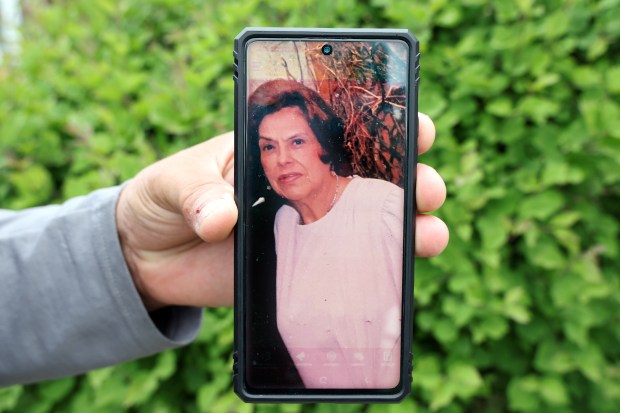
All told, the district has recorded more than 80 traffic-related deaths in the last six and a half years, records show. Most recently, 84-year-old Maria Ochoa Flores, a pedestrian walking just blocks from her home, was struck and killed by a vehicle at Archer and Laramie avenues over the holiday weekend.
Several bouquets of flowers remained at the crash site Tuesday morning. Tire marks, left by drivers doing doughnuts, could be seen in the middle of the intersection.
“This has to end,” Alberto Ochoa, Ochoa Flores’ son, told reporters after the crash. “My mom, all she was doing was crossing the street, and she’s dead now.”
“All she was doing was taking a walk, crossing the street innocently and was run over,” he added.
Ald. Marty Quinn, whose 13th Ward is covered by CPD’s Chicago Lawn District, said several arterial streets are akin to expressways, and the area’s police officers are regularly swamped with other calls for service and unable to discourage aggressive and reckless drivers.
“Pulaski has become a highway. Cicero Avenue has become a highway,” Quinn told the Tribune last week. “We had some issues earlier this year along 63rd Street. We’ve had issues near the airport on 55th Street. I (attribute) it all back to the lack of manpower.”
“250,000 residents (in the Chicago Lawn District) and only 259 blue shirt officers — that’s a problem,” Quinn added.
Police officials have acknowledged in the past that patrol officers across the city are routinely tied down on high-priority calls for service. Jason Huff, of the Chicago Lawn District councilors, echoed Quinn’s concerns about the district’s lack of officers.
“I think drivers, especially younger ones, know this and they have no respect for law enforcement,” Huff said. “I think that’s partially due to social media, partially other aspects that have influenced young people. And so they have no respect for the law or law enforcement and just feel they can do as they please until they either get into an accident or actually do get stopped by the police.”
The Southwest Collective, an equity-aimed nonprofit on the Southwest Side, started a campaign in 2023 — “Pulaski, Slow TF Down” — to reduce traffic fatalities on Pulaski after two pedestrians who lived in the area were struck and killed by vehicles.
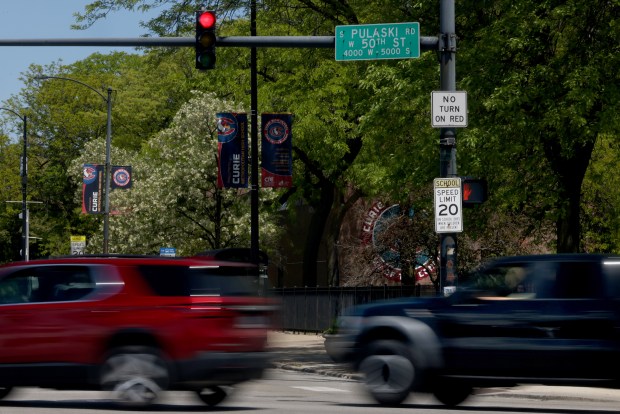
“These were two people who were doing what everybody should be able to do, which is just walk around in their neighborhood, cross the street, come home from visiting a friend or getting groceries or doing whatever,” Dixon Galvez-Searle, the Southwest Collective’s transit advocate, told the Tribune last week.
“A lot of people in the neighborhood and on the Southwest Side in general who live near Pulaski, work (and) spend time near Pulaski, were outraged, were upset, were angry, but were not terribly surprised,” Galvez-Searle added.
During the City Council’s meeting last week, a teacher at Curie High School, located at Archer and Pulaski across the street from a CTA train station, told aldermen that many reckless drivers in the area have no fear of legal reprisal.
“Like many CPS students, most of our students walk and commute via CTA to school,” Veronica Schwenn, an English teacher at Curie, told the City Council on May 21. “South Pulaski is especially unsafe. It is a wide road with little permanent infrastructure, and many drivers are willing to take their odds that no one will be there to give them consequences for their speeding, running red lights and drag racing. People have been killed by this behavior, and it makes our students feel unsafe.”
The Southwest Collective last year surveyed nearly 500 people who live near the busy Pulaski corridor, and the vast majority said their three largest traffic concerns were speeding drivers, congestion from trucks and not enough time to use crosswalks. Meanwhile, a fall 2024 report on traffic crashes by the city’s Department of Transportation noted that a four-mile stretch of Pulaski from the Stevenson Expressway to 71st Street “has become a hot spot for egregious driving, leading to tragic consequences.”
As part of a larger review of crash data, CDOT is also “targeting locations of severe crashes, especially in historically underserved communities, with infrastructure upgrades and policies designed to address the key traffic safety issues.”
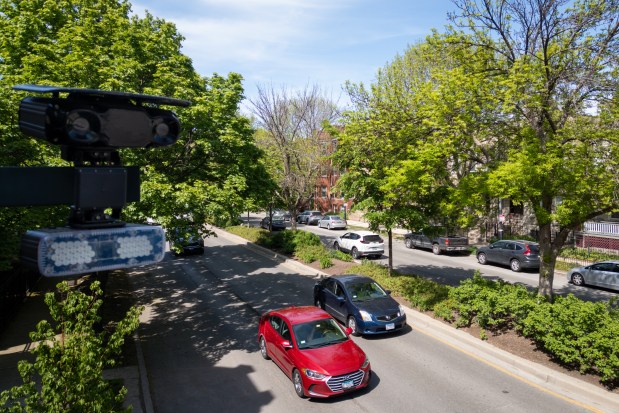
The city in recent months has added more speed enforcement cameras to issue tickets to drivers going more than 6 mph above the posted limit. There are now more than 200 across the city. In 2024, the city’s speed cameras generated more than 2 million citations against drivers, according to city data.
A representative for the city’s Department of Transportation said in an email, “Speed camera locations are selected through a data-driven process that prioritizes areas experiencing traffic safety concerns.”
“The final decisions on identifying, selecting, and designing automated speed enforcement camera locations are made on a case-by-case basis,” the email read, “taking into account a variety of factors including feasibility, effectiveness, and equity.”


